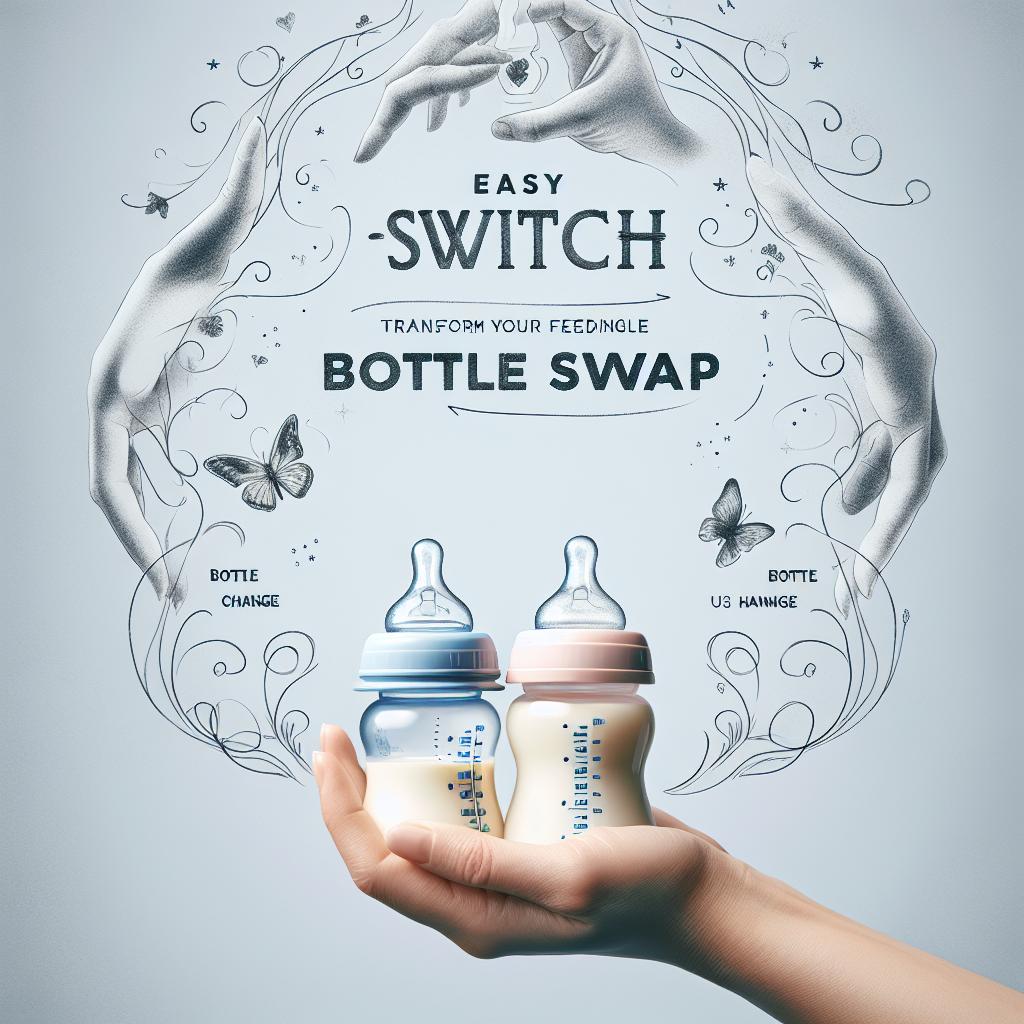Unleashing the Power of a Bottle Change in Your Baby’s Feeding Routine
As a parent, you have probably been on a journey to discover the best feeding patterns that work for your little one. A simple bottle swap can make a world of difference in this journey. A bottle change is more than just replacing one bottle with another; it’s an opportunity to introduce new feeding experiences, engage their developing senses and potentially address problems associated with feeding. Here are insights on what you need to know about utilizing a simple bottle swap.
Understanding the Impact of an Easy Switch
Switching your baby’s bottle might seem like a minor change, but it could impact your baby’s feeding habits in a surprising way. Here are some benefits to anticipate from an easy switch:
– Better Digestion: Different bottles are designed to minimize the amount of air a baby swallows during feeding. This can reduce problems like gassiness and reflux.
– Improved Feeding Experience: Some babies feed better with bottles that mimic the breast’s shape and feel, especially if you are alternating between breast and bottle feeding.
– Eased Teething Discomfort: Silicone bottles, which are softer and more flexible than plastic or glass ones, can provide relief for a teething baby.
Mastering the Art of the Simple Bottle Swap
Transforming your feeding routine through a bottle change involves more than simply buying a new bottle. The process needs to be handled carefully to ensure a smooth transition for your baby. Here’s a step by step guide:
– Research your Options: Before initiating the switch, research to find the best bottle that would fit your baby’s needs. You can consult pediatricians or read reviews from other parents to get ideas.
– Gradual Introduction: It is advisable to introduce the new bottle gradually. Start by using it once a day, then gradually increase the frequency of use as your baby gets comfortable with the new bottle.
– Involve Others in the Process: If your baby doesn’t take to the new bottle immediately, try having someone else feed them. Sometimes, a different person might have better luck with the new bottle.
The journey of bottle switch doesn’t have to be a challenging task. Armed with the right techniques, transitioning your baby from one bottle to another should be a breeze. For more tips and insights, check out our post on getting your baby to love the bottle and stress-free bottle feeding techniques.
Additional Resources
For more insights on feeding routines, the 1-year-old feeding schedule from Mamaknowsnutrition is a great take. To manage sleeping patterns, Dr. Jay Gordon provides an excellent guide on sleep-changing patterns.
Transform Your Feeding Routine with This Simple Bottle Swap
Understanding the Importance of Bottle Choice
When choosing a bottle for your baby, it’s important to understand that the design can have a significant impact on their overall ease with feeding. As all bottles are not created equal, you should consider some factors such as the bottle’s shape, material, flexibility and the design of the nipple. A bottle’s shape can impact how easy it is for the baby to hold it, while the nipple’s design can determine how well they can latch onto the bottle. Materials like glass, plastic, or silicone can affect the bottle’s overall durability and ease of cleaning. Lastly, consider bottles with anti-colic features which minimize the air your baby ingests and can prevent digestive discomfort. Always bear in mind that each baby is unique, and what may have worked for a friend’s baby may not necessarily work for yours.
As your baby grows older, it is necessary to initiate the transition from bottle to sippy cup. This transition which usually begins around the baby’s first birthday, marks an essential milestone in their feeding journey. Deciding when and how to begin this transition requires understanding your baby’s readiness and finding the appropriate cup to accommodate your baby’s changing needs. It is advisable to opt for soft-spouted sippy cups in the initial stages of the transition. You can find more insights on navigating this transition on the Lucie’s List and My Little Eater websites.
Harnessing the Power of Routine
Creating routines around feeding times can significantly support the bottle swap and enhance your baby’s overall feeding experience. It could be something as simple as feeding your baby at the same times every day, using specific songs or lullabies while feeding, or maintaining a quiet and calm environment. Be open to making adjustments along the way to best fit your baby’s needs and keep in mind that babies, like us, crave consistency. Therefore, maintaining a routine can make them more comfortable and peaceful during feeding times.
Do’s and Don’ts of Bottle Feeding
Bottle feeding your baby can be a heartfelt bonding experience when you are aware of the do’s and don’ts. Always hold your baby upright and make sure to keep the bottle tilted so the liquid fills the nipple. This prevents air from being pulled into the bottle, which could cause discomfort for your baby. Avoid propping up the bottle and leaving your baby to feed alone as it might increase their risk of choking. Also, don’t heat the milk in a microwave as it could result in uneven heating and lead to hot spots that might burn your baby’s mouth. And remember, don’t pressurize your baby to finish the entire bottle if they indicate that they are full.
Supporting Your Baby’s Nutrition
Apart from learning how to effectively bottle feed your baby, it’s important to understand that the substance inside the bottle plays an equally crucial role. Aim at providing your baby with the right nutritional balance to support their overall growth and development. Always consult with your pediatrician or a nutritionist before introducing any new food or formula to your baby, and make sure you are informed of their nutritional needs at different stages in their growth.

